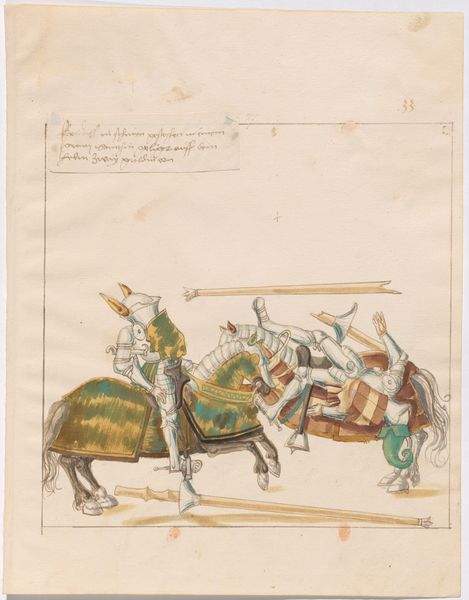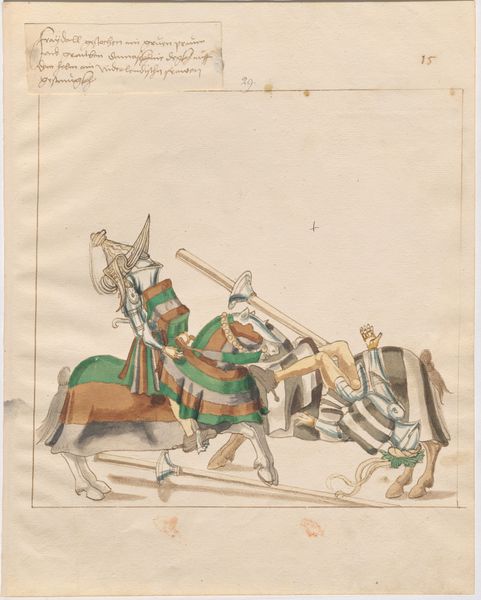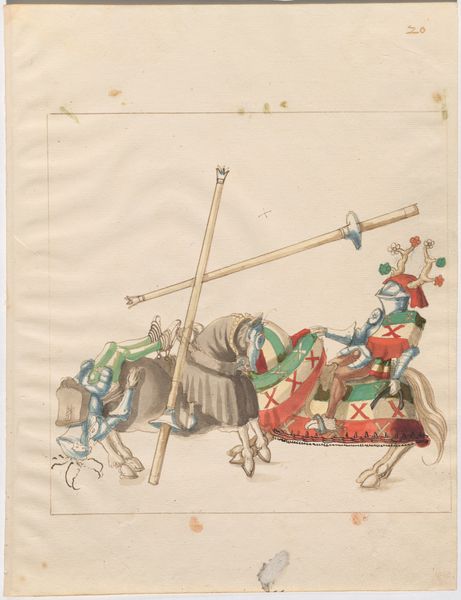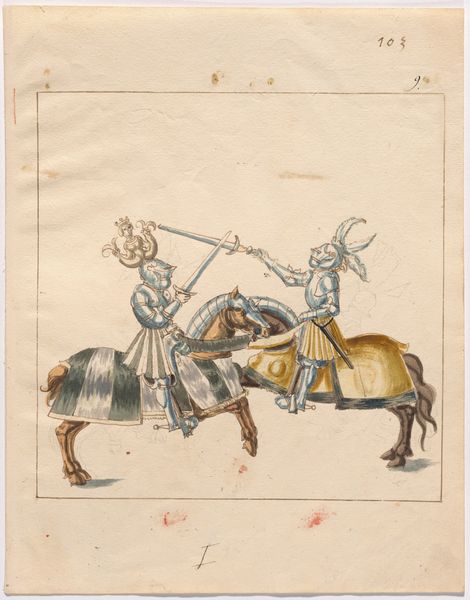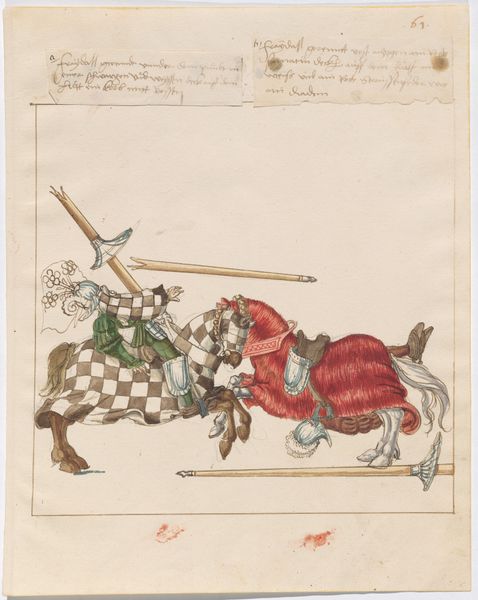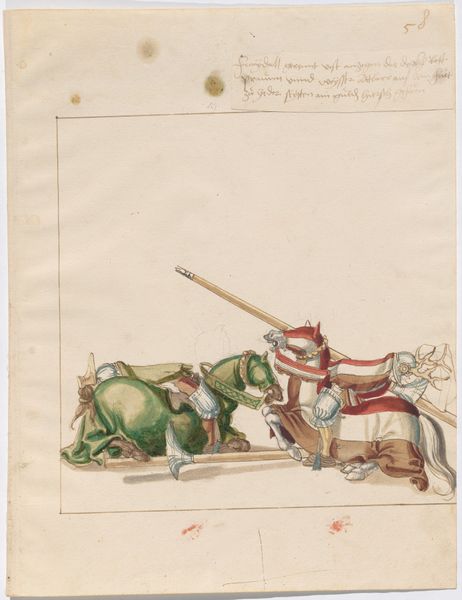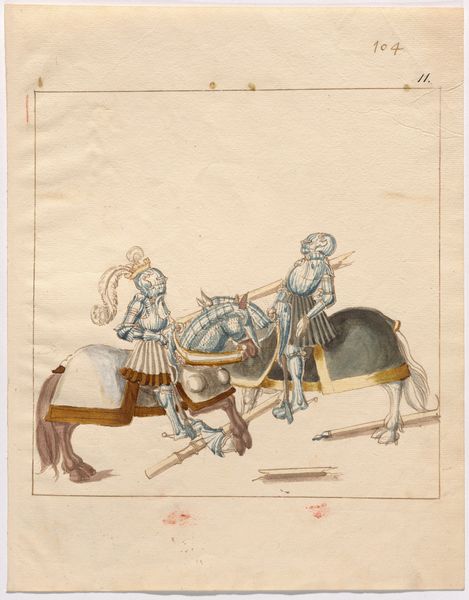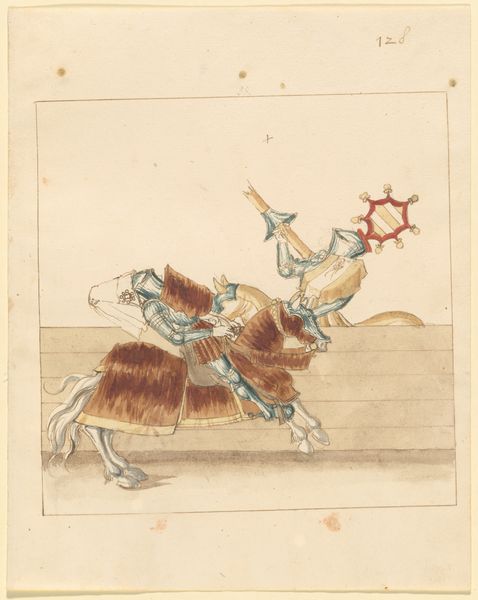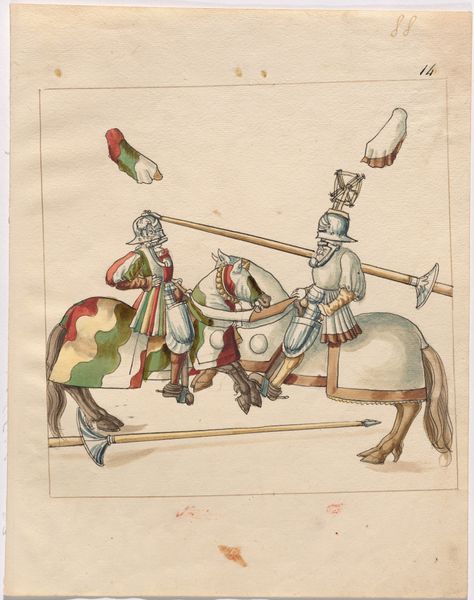
drawing, coloured-pencil, watercolor
#
drawing
#
toned paper
#
coloured-pencil
#
figuration
#
11_renaissance
#
watercolor
#
coloured pencil
#
watercolour illustration
#
history-painting
#
watercolor
Dimensions: sheet: 33 × 26.2 cm (13 × 10 5/16 in.)
Copyright: National Gallery of Art: CC0 1.0
Curator: This striking drawing is titled "Joust of Peace in Leg Armor," dating back to around 1512-1515, created by an anonymous artist. It’s rendered in watercolor and colored pencil on toned paper. Editor: What grabs me immediately is the dynamic energy, that strong diagonal composition. One jouster seems victorious while the other is…well, let’s just say things aren’t going his way. Curator: Indeed. Observe the meticulous rendering of the armor. The artist’s focus isn't just on the scene itself but on the material precision—how light catches the polished metal. It's fascinating to note how the linear details define the figures against the toned ground. Editor: The tilted angle certainly adds drama. Jousting often represents chivalry and codes of conduct, but here, we have more than that. This toppling signifies a fall from grace or perhaps even fortune. Curator: Precisely. Consider the symbol of the lance: it pierces but it also carries—both aggression and support. Look, too, at the defeated jouster’s posture: the legs, still reaching, almost mirroring the other's raised arm, a juxtaposition in form between defeat and triumph. Editor: The colours also intrigue. The use of warm browns contrasts sharply against the cool blues and greys of the armor. The colour temperature reinforces the sense of chaos and upheaval within a seemingly rigid, formalized combat. It speaks to how these structured competitions carry deeper psychological weight about control and instability. Curator: Absolutely. Notice how the colours are applied in transparent layers to define forms and enhance luminosity. The graphic qualities are undeniable and speak to a concern of shape rather than any specific contextual symbolism. Editor: Ultimately, I read this as a potent representation of fate. Though meticulously staged, such contests of skill inherently teeter between controlled display and potential disarray. Curator: Yes, viewing the art on its formal merits highlights a controlled precision while the symbolism offers further insight into historical values. Both in equal measure grant new views into understanding it better. Editor: An apt way to consider it, indeed. I hadn’t considered the material analysis enough on my first pass.
Comments
No comments
Be the first to comment and join the conversation on the ultimate creative platform.
